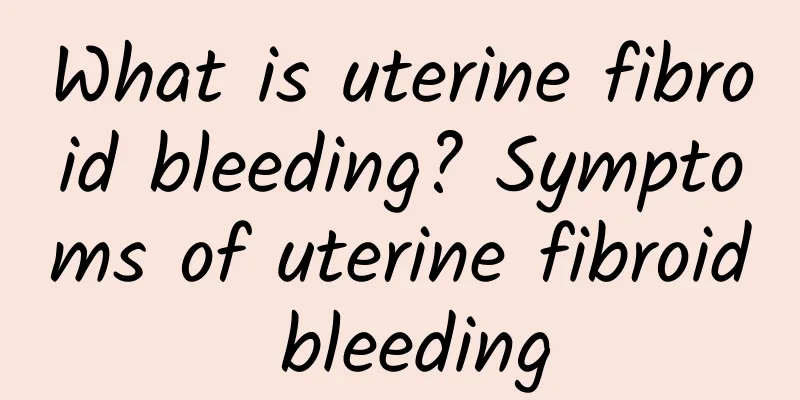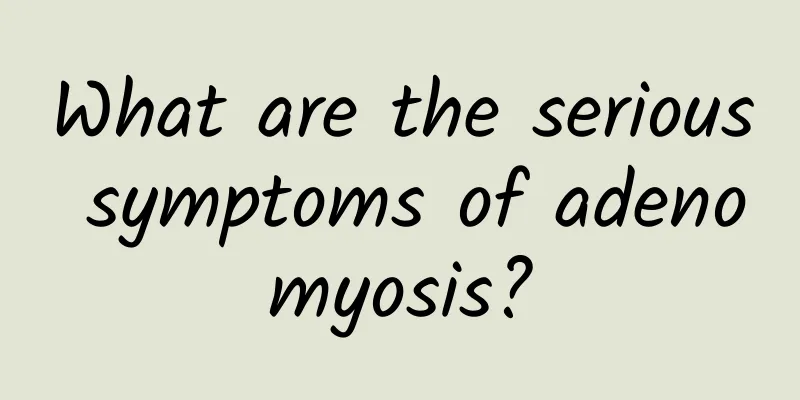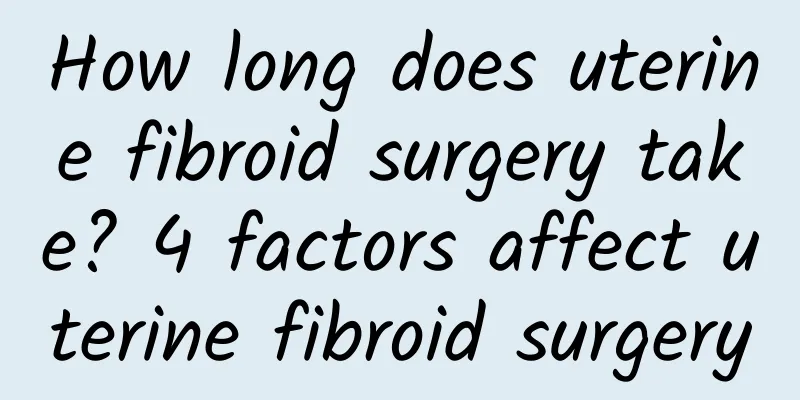What is uterine fibroid bleeding? Symptoms of uterine fibroid bleeding

|
What is uterine fibroid bleeding? - Learn about the symptoms and treatment of uterine fibroid bleeding Uterine fibroids are common benign tumors in gynecology. They are formed by uterine muscle tissue and can appear in various locations of the uterus. Uterine fibroid bleeding refers to abnormal bleeding during the growth of uterine fibroids, which causes discomfort to patients. This article will introduce what uterine fibroid bleeding is, as well as its symptoms and treatment methods. 1. What is uterine fibroid bleeding Uterine fibroid bleeding refers to abnormal bleeding caused by the growth of uterine fibroids. Uterine fibroid bleeding may cause increased menstrual flow, prolonged menstrual periods, and uterine bleeding. Some patients may experience anemia symptoms such as fatigue and dizziness. Uterine fibroid bleeding may also cause abnormal menstrual cycles and menstrual disorders. 2. Symptoms of uterine fibroid bleeding 1. Irregular menstruation: Bleeding from uterine fibroids can cause the menstrual cycle to become longer and the menstrual period to be prolonged. Patients may experience early or delayed menstruation. 2. Increased menstrual flow: Bleeding from uterine fibroids causes a significant increase in the patient's menstrual flow, and sanitary napkins may need to be changed frequently. 3. Lower abdominal pain and pressure: Due to the growth of uterine fibroids, patients may experience lower abdominal pain and pressure, especially during menstruation. 4. Symptoms of anemia: Frequent uterine bleeding will cause the patient to lose too much blood, leading to symptoms of anemia, such as fatigue, dizziness, pale complexion, etc. 3. Treatment of uterine fibroid bleeding 1. Drug treatment: Mild uterine fibroid bleeding can be treated with drugs. Commonly used drugs include oral contraceptives, which can effectively reduce menstrual volume and relieve symptoms. 2. Surgical treatment: For patients with severe uterine fibroid bleeding or other treatments that are ineffective, surgery may be a common treatment method. Surgery can solve the bleeding problem by removing the uterine fibroids. 3. Interventional therapy: For some special cases, interventional therapy may be an effective option. Interventional therapy involves inserting a catheter into the uterine artery to embolize the ischemic artery and achieve hemostasis. Uterine fibroid bleeding is a common and distressing gynecological disease. Understanding its symptoms and treatments is crucial to preventing and treating the disease. If you have symptoms of irregular menstruation and heavy menstrual flow, it is recommended to seek medical attention in time and seek the help of a professional doctor to confirm the diagnosis and take appropriate treatment. Remember, maintaining healthy living habits and regular checkups can reduce the risk of disease! |
>>: What are the 3 signs of uterine fibroids? The most common symptoms of uterine fibroids
Recommend
How to treat adenomyosis and uterine enlargement effectively
Adenomyosis causes the uterus to enlarge. Treatme...
Mild cervical erosion symptoms need careful observation
As long as cervical erosion can be detected in th...
Several important points to note for painless abortion
Painless abortion is a surgery that many women ch...
Focus on 3 aspects of psychological care for patients with artificial abortion
Abortion surgery also causes great psychological ...
What are the early symptoms of ovarian cysts?
Ovarian cysts can occur at any age in women's...
What to do if you have irregular menstruation after an artificial abortion? If you have irregular menstruation after an artificial abortion, you should refrain from sexual intercourse within one month.
1. Causes of irregular menstruation after artific...
Coconut water is a must! 10 benefits for weight loss are also on the list
Summer is the peak season for coconuts, especiall...
What medicine can treat vulvar itching?
There are many symptoms of vulvar pruritus, and p...
The cost of a regular abortion operation consists of several parts: the cost structure is divided into the pre-abortion, mid-abortion and late
Many times when a woman finds out she is pregnant...
Swimming to lose weight, calorie intake of men and women is very different, supplementing 3 nutrients without burden
In scorching hot weather, swimming can not only c...
What are the main symptoms of cervicitis in women? There are three main symptoms of cervicitis in women.
Cervicitis is the most common type of inflammatio...
What kind of anti-inflammatory water should be used after abortion? Is it necessary to receive intravenous drip for 3 days after abortion?
Abortion is a common gynecological surgery that a...
What are the indications for interventional treatment of ectopic pregnancy?
When women choose interventional treatment, they ...
Summer slimming tips Wu Mingzhu recommends: Honey Cassia Tea
In the hot summer, losing weight seems to be an i...
What foods should I eat for dysmenorrhea? High calcium foods are good
When women have their period, basically many peop...









